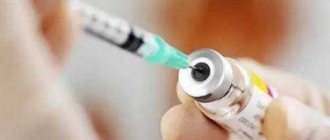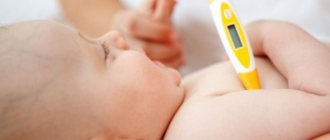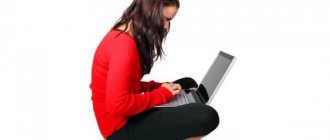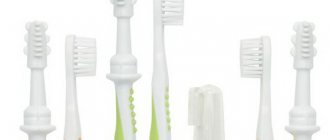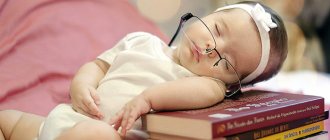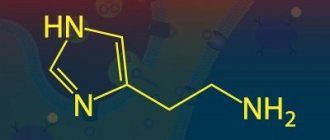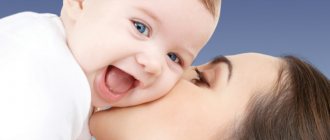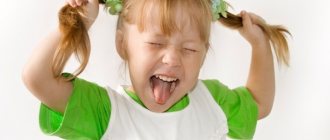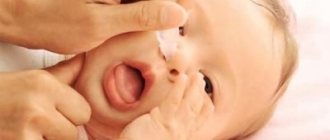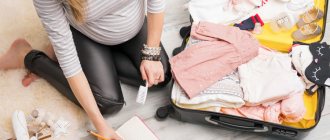How and when to wash your baby’s hair
An important question about how to wash a newborn’s hair arises among young parents who are enjoying their first child.
In difficult life situations, the older generation is always ready to help and share their experiences with young people.
If the Internet is the only friend you can always turn to, my story will be interesting to you.
What time to carry out water procedures
It is better to wash the baby before feeding. Since it is recommended to take a bath every day, you can choose one time and bathe your baby according to the schedule.
Many parents prefer to bathe the baby before the last evening feeding. There are two reasons for this. One of them is that dad returns from work and can help mom bathe the baby.
Another reason is the baby’s good, sound sleep at night after water procedures. You just need to monitor the temperature of the water and not make it too hot.
This can become a reason for overstimulation of the baby’s nervous system and evening whims.
It is recommended to wash a newborn baby's head and body with soap twice a week. His skin is very delicate, and frequent use of soap during bathing can cause it to become dry.
You can use antibacterial soap for children, but it is better to take a shampoo for the head from a children's series that does not cause tears.
When a baby switches to three meals a day, water procedures are carried out for him before lunch or before dinner. The need to bathe the baby before eating is due to the fact that immediately after feeding he needs to sleep.
At an older age, the child will be able to take a bath after dinner; this is especially convenient if dinner is not too late.
Bathing in the tub
Bathing in a bath begins with preparing everything you need. This is especially important when the mother bathes the baby alone.
In this case, there will be no one to bring soap or a towel. To keep everything at hand, place next to the bath:
- baby soap;
- baby shampoo,
- soft terry cloth;
- towel;
- a vest, diaper or nightgown;
- cotton wool to remove moisture from the ears and nose.
Before the procedure begins, parents themselves need to prepare. Remove watches and rings, wash your hands with soap. You can wear an apron or bathrobe to avoid getting your clothes wet.
The bath must be washed with baby soap or shampoo; it is prohibited to use other household chemicals for this.
Further bathing depends on the type of bath you purchased. If it has a special stand to lay the baby down, there will be no difficulties in bathing.
In addition to the stand, they also sell hammocks, which are attached to the edges of the bath in the water and the baby is placed in them.
In the first days after the maternity hospital, it is recommended to bathe the baby in a diaper so that he is not afraid of the water. The child begins to use soap and wash his hair with baby shampoo two or four weeks after birth.
Many pediatricians do not advise bathing your baby until the umbilical wound heals. It is only important to keep the body clean under the diaper and around the mouth. You can wash your baby on days when you do not give him a full bath.
During the first baths, you do not need to fill the bath with a lot of water, especially if you bathe your child yourself and without any convenient equipment.
It is necessary to draw water at a temperature that is comfortable for the child in the first month of life - this is 36 or 37 degrees. They measure the temperature of the water with a water thermometer, because testing it with your elbow or wrist can make a mistake.
The child is placed with his head on the elbow joint of the right hand, and the fingers of the same hand support the baby under the armpits. Using a terry cloth soaked in water, wash the baby’s face and head without soap.
Apply shampoo or soap to the palm of your free hand and gently lather the baby’s head. Movements should be from the forehead to the back of the head.
Then you need to soap his body with your hand in the same way. A terry cloth is moistened in clean water and wrung out; it can be used to wash the child from foam.
The napkin is rinsed and wrung out, and the procedure is repeated twice. If water flows from the napkin, the soapy baby may catch foam and it will get into the eyes or ears. You can carefully wash off the foam by pouring it with your palm, then you don’t apply too much shampoo.
If the child is restless and lathering him in the water yourself is a problem, you can bathe him together. Or put a large pillow on the table next to the bath, cover it with a waterproof diaper, and soap the baby on the diaper next to the bath. Then wash it in water, holding it firmly with both hands.
Which shampoo to choose
It is recommended to wash your child’s hair no more than once or twice a week using shampoo. The rest of the time, just clean water and herbs.
Which washing shampoo should you choose for water procedures? If the packaging simply says “children’s” without indicating the age, you can use this shampoo only when the child turns 3 years old. High-quality shampoos are more expensive and are sold in pharmacies.
There are shampoos that combine the functions of a bathing and hair washing product. They are very easy to use. When choosing, you need to pay attention to the composition.
It is better to choose a product without synthetic fragrance, methylparaben, propylparaben. In high-quality shampoos, these components are replaced with essential oils, vitamins, lactic and plant enzymes.
Useful tips
For a child, daily water procedures are much healthier than their absence. It is recommended to bathe the baby in a warm room, and gradually reduce the water temperature, which will help harden the child’s body.
After bathing, wrap the baby in a soft terry towel. Do not make rubbing movements. Do not dry children's hair with a hairdryer. The baby's body and head are carefully blotted with a towel.
The diaper cream is applied some time after bathing, when the skin is dry. After applying the cream, put on a diaper at night and feed the baby.
When the baby's hair is dry after bathing, comb it with a comb or hair brush. To prevent crusts from forming on a child’s head, do not wear a cap in the room when it is warm.
razvitie-vospitanie.ru
How to bathe and wash a newborn baby's hair - pediatrician's recommendations
Immediately after being discharged from the hospital, young parents are faced with a large number of issues related to the hygiene of the newborn and baby in the first months of life - regular bathing, cleansing the nasal cavity and ears.
Therefore, the pediatrician’s recommendations and answers to their questions are relevant in the first days of staying at home.
First bath and when can you start washing your newborn's hair?
Pediatricians recommend the first bathing and washing of a newborn's hair in the first days after discharge from the maternity hospital.
A very important point is to follow the recommendations of a neonatologist:
If the baby was vaccinated with BCG on the eve of discharge, bathing should not be carried out on the first day.
Parents also need to know that until the umbilical remnant falls off and the umbilical wound heals, the baby needs to be bathed in boiled, settled water.
It is important to maintain the temperature in the room and a comfortable temperature of the water for swimming (36.5 - 37 degrees) - it is better to measure it with a special thermometer.
Uncomfortable water temperature (cold or hot) causes discomfort, and the baby will have a negative attitude towards the bathing procedure in the future.
How often should a baby wash her hair?
The first washing of the hair is carried out in the first days after discharge from the maternity hospital, then the head is rinsed daily when bathing, and washing with special detergents (soap, gel or shampoo) depending on the contamination - 1-2 times a week.
Many mothers believe that if you rinse your baby’s head during daily bathing, his heat exchange is disrupted.
This is a myth and daily gentle removal of contaminants is necessary:
- vernix lubrication and remnants of the original epidermis in the first weeks after birth;
- sweat and fat, after the glands begin to function;
- fatty scales in the presence of gneiss or other signs of seborrhea.
Washing the head daily (without using soap or shampoo) with gentle massage movements activates blood circulation in the skin and stimulates the maturation of hair follicles and baby hair growth.
What products to choose for washing a baby's hair?
The choice of hair wash must be taken seriously:
- for newborns and children in the first two to three months of life, baby soap without dyes, flavors and additives is more often used;
- if you choose a shampoo, it must be certified (marked “for children” or “from the first days of life”), do not contain phosphates and toxic additives, but you must take into account that some even certified products can cause allergic reactions and irritate the mucous membranes .
Step-by-step instructions: wash your newborn’s hair correctly
To bathe your baby, you need to purchase a separate bath, which must be doused with boiling water and washed well before the first bath.
You should not bathe your newborn every day, especially if he is not yet a month old. This is harmful to his health, so it is advisable to stick to a certain schedule. The best option is to bathe the baby 2-3 times a week.
Before bathing, you need to remove all jewelry from your hands so as not to injure the baby’s delicate skin.
Step-by-step instructions for bathing and washing your hair:
- Fill the bathtub with warm, boiled, settled water; for bathing babies older than a month, you can use herbal decoctions (chamomile, chamomile), the volume of water should be such that the baby’s entire body is covered with water when immersed, but the baby lies freely in the water, and the head is without voltage was above the water.
- Place a clean diaper on the bottom of the bath, leaving the edges to wrap the baby.
- Slowly, gradually lower the baby into the water, holding the back and head.
At the same time, the baby must stay awake - a sleepy baby may get scared, and in the future bathing will cause him anxiety and crying.
- The baby's head and body need to be wrapped in a diaper so that he gets used to the temperature of the water and does not freeze.
- The baby’s head is washed with gentle massage movements from the forehead to the back of the head; if shampoo or soap is used for washing, care must be taken to ensure that the foam does not get into the eyes.
- The head is washed over the entire surface, but carefully in the area of the fontanel.
All fears and concerns about possible damage to it are unfounded - the baby’s brain is reliably protected by a thick cartilage layer and skin.
After application, the detergent is immediately washed off - from the forehead to the back of the head.
The baby's head is again wrapped in a diaper to prevent it from freezing.
Proceed directly to bathing: use gentle massage movements to wash the skin behind the ears, neck, armpits and groin. You should also wash your genitals thoroughly.
It's important to do it right. For girls, they should be washed with movements from front to back. After all the procedures done, you need to rinse the baby’s body with clean water.
Drying a newborn's hair after washing
After washing, the baby's head is wrapped in a towel; there is no need to specifically wipe it - you can gently pat it dry with a towel and leave it to dry.
Never use vigorous rubbing or a hair dryer.
It is important that the temperature in the room is comfortable and the baby does not freeze.
If you follow all these recommendations, the baby will gradually get used to bathing and will react positively to it. If the bathing procedure is carried out incorrectly, reactions in the form of redness and peeling and negative psychological reactions of the child during the bathing process may occur - crying and anxiety.
pediatrician Sazonova Olga Ivanovna
Save
Save
www.malyshzdorov.ru
Basic Rules
Before the procedure, you must prepare any of the following:
- fragrance-free solid or liquid soap for children;
- special gel or baby foam (the label should indicate “from head to toe”);
- baby soft shampoo.
Be sure to use one that does not cause tears if it gets into your eyes.
Next, you can start washing your hair:
- It is advisable to bathe a newborn in a baby bath, which must be washed first. Fill with water, maintaining a temperature of 36 C. Measure readings with a thermometer, not with your hand, since the sensations of an adult and a baby are significantly different.
- Lower the baby into the bath, holding part of the back, neck and head with the palm and fingers of your left hand. You can simplify the position by placing the newborn's head on the inside of the left wrist. This way, the baby’s neck and upper chest will be in the palm of an adult.
- You can start washing your hair by wetting the baby's hair with your right hand. Then lather your own hand with shampoo or soap and apply the product to the newborn’s head. In this case, it is necessary to move towards the back of the head from the forehead area, gently rubbing the shampoo into the scalp in a circle.
- The soap is also washed off using the palm of the right hand, pouring over the baby’s head from the forehead to the back of the head. Don't skimp on water - there shouldn't be any product left on your hair.
Many mothers have a question about whether they need to wash the fontanel. Some are afraid to touch it for fear of damaging it, but these fears are completely unfounded. The newborn's brain is reliably protected by skin and a thick cartilage layer. However, the washing procedure should still be carried out with care.
How to wash a newborn's hair and how often?
Newborns wash their hair daily with every general bath. A child in the first months of life is washed with soap 2-3 times a week.
The child is placed in a bath of water, the temperature of which should be 34-37 °C. With her left hand, the mother holds the baby’s head and tilts it back slightly. Using a soapy hand [1], soap the child’s head from the forehead to the back of the head [2] with soft circular movements, making sure that the soap does not get into the eyes. Mom rinses off the soap with water, running her hand from her forehead to the back of her head. It is very important that the scalp is washed well to avoid the formation of crusts.
Some mothers pay special attention to the fontanel when bathing their newborn, while others do not wash the fontanel at all, so as not to injure the baby. Moms are safe! The baby's brain is well protected by a thick and durable membrane, so it cannot be injured during bathing.
__________ 1. There is nothing more tender in the world than mother’s hands. Therefore, it is better to wash a newborn with your hand rather than with sponges. Save the sponges for later, when your baby is older. Naturally, in this case, the mother should pay great attention to the cleanliness of her hands, the condition of her nails and the absence of jewelry that could damage the baby’s delicate skin.
2. When bathing, a newborn baby should not be lathered directly with the soap itself - lather your hand and the baby with it.
Author of the article, B. Boychuk, 2010.
Based on materials: Alferov V.P. We had a child...: 300 questions from young parents. - L.: SMART, 1991; Komarovsky E.O. The health of the child and the healthy sense of his relatives. — Kharkov: CLINICOM, 2008; Capraru E. Mother and Child. - Bucharest: Medical Publishing House, 1989.
nashkinder.ru
Additional recommendations
When washing your hair, it is important to ensure that soap or shampoo does not get into your baby’s eyes, even if it guarantees a “tearless” procedure. Before washing your newborn's hair, you do not need to buy a washcloth. There is nothing better than mother's affectionate hands, and it is better to leave additional washing products for older age.
- If your baby's head gets dirty often, then you need to pay attention to his headdress. There is no need to wear a cap or cap indoors at a temperature that is comfortable for the newborn. Otherwise, the skin on the head will sweat, the hairs will stick together, and eventually a crust will form that will have to be removed.
- It is enough to soap the baby's head once - no repeat procedure is required.
- After washing, the newborn's head should be blotted with a towel and left to dry - do not use a hairdryer or vigorous rubbing.
- Almost dry hair can be gently combed with a soft brush. It is better to cut off tangled hair rather than try to comb it.
When answering the question of when you can wash a newborn’s hair for the first time, pediatricians advise not to rush and carry out the procedure no earlier than 2-4 weeks after the baby is born.
How often should a child wash his hair?
A small child’s hair should be washed slowly, doing everything gradually. The washing technique should be gentle, and the water temperature should not exceed 370C.
The baby's head should be tilted back, supporting it with your hand (so water will not get into the eyes), pour water on it and apply a little special baby shampoo. You should only cleanse the child’s scalp, so you don’t need to rub the shampoo over the entire length of the hair, but massage the head for about three minutes with gentle movements from the forehead to the back of the head. This massage increases blood circulation, stimulating hair growth.
Next, the shampoo must be carefully washed off (without reapplying it). Long hair should be washed especially thoroughly so that it does not become tangled when combing and does not split at the ends. You should rinse your hair with previously prepared boiled water.
After rinsing, you can pat your hair dry with a soft terry towel and let it dry on its own naturally. Under no circumstances should you comb wet hair.
It is very important to pay attention to the naturalness and softness of the shampoo. It should be suitable for the child’s age and not dry out the delicate scalp and hair. It is better to choose shampoos with a neutral pH and marked “tear-free”; even if their foam accidentally gets into your eyes, you do not have to worry about irritation and children’s tears. Good shampoos always contain soft natural ingredients and moisturizing complexes that perfectly care for a child’s hair and scalp.
How often should you wash your child's hair?
A newborn baby's head must be washed daily, because babies usually sweat a lot. Also, intense metabolic processes take place in the scalp, which causes the sebaceous glands to actively work. You can wash your hair with shampoo, which is specially created for newborns, as needed. In addition, it depends on the amount of hair on the child’s head. If the baby still has little hair on his head, then in principle he does not need shampoo.
When the child grows up, you can use baby shampoos. After all, dust, dirt and sweat, settling on a child’s hair, block the access of oxygen, and this affects the health and growth of hair. On the other hand, a child’s scalp and hair are not as oily as adults’, so they need to be washed as they become dirty.
For children under three years old, it is enough to wash their hair with shampoo once a week, and for older children - 1-2 times a week.
The child needs to wash his hair regularly, preferably every day, using the so-called “false wash” in between shampoos. This means that you can wash your child’s hair simply with warm water or infusions and decoctions of medicinal herbs.
Daily hair washing will teach your baby to regularly carry out this procedure, and his hair will grow healthy and strong.
If I go on a diet, I’ll become healthy and young! Does this sound familiar to you? Subscribe to everything about diets!
apteke.net
Understand the reason for not washing your hair.
Washing your hair is a fun activity
In order to further understand how to wash a child’s hair if he is afraid, you need to understand his fears. Do not scold your child under any circumstances, this can only worsen the whole situation. You just need to acknowledge his fear. Agree that he is scared to wash his hair.
The first reason why a child is afraid is fear:
- water gets into the eyes;
- into the nose;
- in the mouth;
- afraid of choking.
Perhaps there are some other reasons. If the child is already 2-2.5 years old, then you can talk to him and understand the essence of the problem. Don’t tell your child what’s wrong or something like that. Take the child's side. He must understand that you will protect him, that you will not do anything bad.
The second reason is “self-ness” and boundaries. Manifestation is possible from two to three years. That is, until this time everything is fine, and then suddenly - and nothing. Complete refusal to wash your hair. At the same time, the baby can happily splash around in the bathtub for a long time, play in the water, swim, but as soon as he washes it, it’s a resounding “no.”
The third reason is a fear of water, and a sudden one. Psychologists say that this is a period of child development and begins at approximately 3–5 years, not for everyone, of course.
But, you can come to an agreement with the child. You can learn to wash your hair without screaming and crying, maybe even the child will want to wash his hair himself. Below we will present the options that can help you with your child. But I’ll say right away: maybe everything will work out on the very first advice, or maybe more than one piece of advice will not work.
